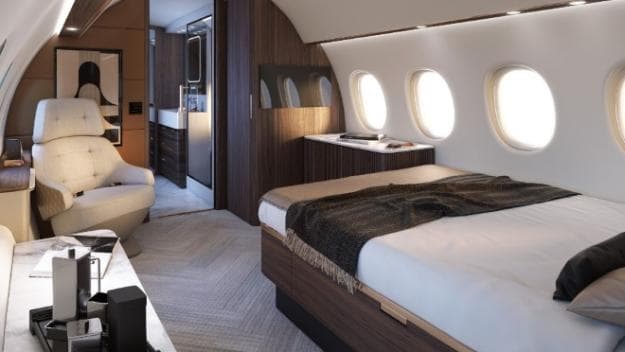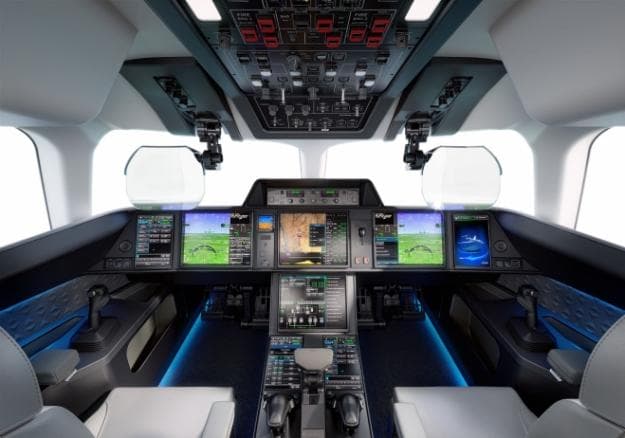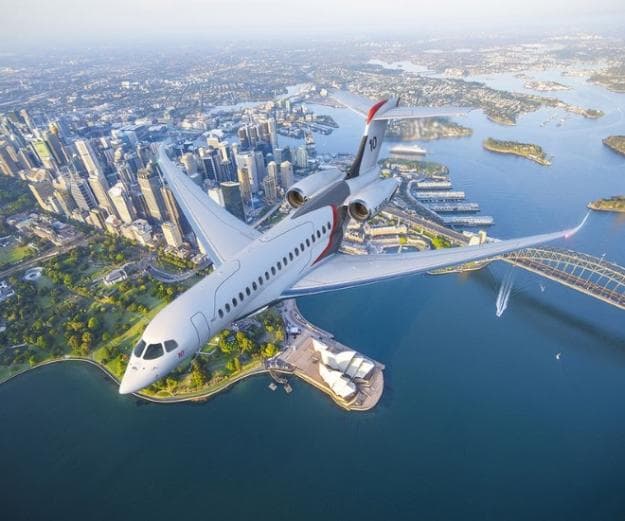Dassault Aviation announced the release of the latest iteration of its iconic business jet, the Falcon. Touted as the “new benchmark in business aviation” by CEO Eric Trappier, the Falcon 10X is going toe-to-toe with its competitors from Bombardier and Gulfstream. It was designed based on customers’ demand for an “ultra-long range Falcon”, combining innovative technologies, luxury customisations and greater internal volume. According to Trappier, these features would “put (them) at the top of business jets”.
First off on the Falcon 10X’s list of boundary-pushing features are its customisable cabins. It boasts better modularity than other aircraft in its class. This is made possible by its cabin size which according to their press release, is “almost eight inches (20cm) wider and two inches (5cm) taller than the widest and tallest purpose-built business jet flying today.” With its larger size, the Falcon 10X is able to accommodate up to four cabin zones of the same length but owners are given the option to configure the internal layout to suit their needs.


Apart from modularity, the Falcon 10X’s cabin will also have better pressurisation. At an altitude of 41,000 feet, cabin pressure will be maintained at levels equivalent to that of a mere 3,000 feet, greatly enhancing passenger comfort. An advanced filtration system, similar to those used in hospital ICUs, will refresh air up to 10 times faster than the filters used in modern office buildings.
A redesigned fuselage on the Falcon 10X will be lined with 38 windows, all of which are 50% larger than those of its predecessor, the Falcon 8X, allowing for more natural light to brighten the expansive cabin.

Given the proposed ranges that the jet will be flying, the abovementioned features are indispensable for passenger comfort especially since flights could last upwards of 15 hours.
Carbon fibre composites seem to be the current pinnacle of material engineering and are being used in all manner of products. For an aircraft as innovative as this, it was a no-brainer. The engineers at Dassault Aviation leveraged on the lower weight and superior strength of carbon fibre composites when crafting the Falcon X10’s wings, tailoring them to maximise speed and efficiency. The combination of advanced materials and design results in the extremely handy ability to take off and land on shorter runways making it ideal for operating out of smaller private airports.
Powering the Falcon 10X are a pair of Rolls Royce Pearl 10X’s. Dassault Aviation really didn’t skimp on innovations with this jet. The twin Rolls Royce engines are reportedly the most advanced in business aviation, providing over 18,000 pounds of thrust, and aren’t even in production by the British company yet.

The twin-engine design was a response to increasing customer demands for more sustainable propulsion. With its modern design and powerplant, the Falcon 10X is capable of hitting a top speed of Mach 0.925 once it reaches cruising altitudes. Typical high-speed cruises tend to hover at Mach 0.90 while Mach 0.85 remains the speed for extended flights.
In terms of range, Dassault Aviation states that the Falcon 10X will possess a maximum range of 8,631 miles (13890 km), allowing it to handle extended non-stop flights between Los Angeles and Sydney, or Paris and Santiago.
The fight deck on the Falcon 10X is truly a technological marvel, designed to be intuitive for the pilot and utilising touchscreens throughout the cockpit. The Digital Flight Control System is derived from the same technology used by pilots flying combat missions in Dassault Aviation’s Mirage fighter jets. The fly-by-wire system is the most advance that the French company has developed thus far and give pilots a level of precise control that is currently unheard of in business aviation. Other innovations include a single-button recovery mode which stabilises the aircraft in cases where the pilot loses situational awareness. Additionally, the Falcon 10X features a smart throttle that acts as the primary power control, linking the powerplant to the Digital Flight Control System to automatically adjust each engine’s power according to different situations.

The final cherry on top is Dassault Aviation’s FalconEye combined vision system, the first of its kind offering enhanced and synthetic vision capabilities. Working in tandem with the primary flight displays, a pair of heads-up displays (HUDs) the Falcon 10X qil be able to operate in conditions of zero ceiling/visibility.
Though the Falcon 10X’s release comes a little later than the offerings of its competitors, it’s plain to see why. Dassault Aviation spared no detail in creating this amalgamation of state-of-the-art technology and luxury. With its expansive cabin, owners are able to customise the interior layout for a truly bespoke experience while the cornucopia of technology added into the aircraft push the capabilities of the modern long-range private jet.
In the words of Eric Trappier, “We have set the bar for our new Falcon incredibly high, but I can confidently say that we have put this aircraft at the top of the market.”
For more information on the Falcon 10X, head over to Dassault Aviation’s website.
All images courtesy of Dassault Aviation.
